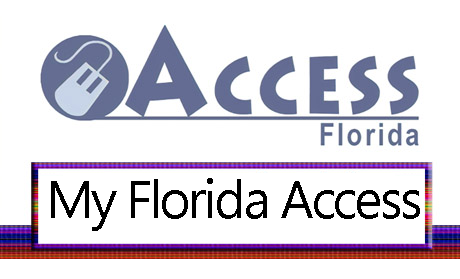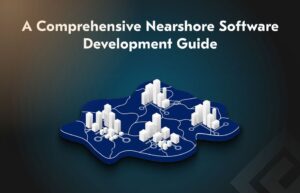In recent years, Nearshore SaaS development has become a key focus for businesses looking to outsource their software solutions while minimizing communication barriers and reducing costs. This model allows companies to tap into highly skilled software development teams in nearby regions, leveraging a combination of technical expertise and geographical proximity. Let’s explore how nearshore SaaS development is shaping the future of businesses globally, particularly in areas like SaaS helpdesk software and SaaS cost management.

SaaS Helpdesk Software: Streamlining Customer Support

For any business, providing effective customer support is crucial, and this is where SaaS helpdesk software comes into play. Cloud-based help desk solutions offer companies a reliable platform to manage customer inquiries, issues, and requests. The benefit of using help desk SaaS is that it offers scalability, flexibility, and real-time accessibility, making it easier for companies to provide exceptional customer service.
Help Desk Software as a Service: The Modern Solution
The traditional approach to helpdesk management often involves on-premise software, which can be costly and difficult to scale. With help desk software as a service, businesses can eliminate these challenges and benefit from a more efficient system that requires no physical infrastructure. This shift to the cloud is a fundamental aspect of SaaS development, offering businesses greater control and faster issue resolution.
SaaS Service Desk Software: Empowering IT Teams
Another critical component of SaaS development is SaaS service desk software, which allows IT teams to handle internal support requests. This tool is indispensable for managing tickets, troubleshooting issues, and ensuring that employees have the tools they need to perform their work efficiently. Whether it’s managing IT issues or providing real-time assistance, SaaS service desk software plays a vital role in keeping operations smooth.
SaaS Cost Management: Optimizing Business Expenses

A major concern for businesses embracing SaaS models is the SaaS cost management. With the increasing number of subscriptions, it becomes essential to track and optimize usage to avoid unnecessary spending. This is where SaaS cost management tools come into play, offering businesses a way to monitor and control their expenditures effectively.
SaaS Amazon: Leveraging Cloud Solutions for Growth
One of the leading platforms for hosting SaaS applications is SaaS Amazon, also known as AWS (Amazon Web Services). AWS provides scalable infrastructure and services, making it a preferred choice for businesses looking to host their applications in the cloud. The flexibility and reliability of Amazon software as a service empower companies to expand their digital solutions globally, making it a powerful tool for SaaS developers.
Best Accounting Software for SaaS: Managing Finances with Ease
When it comes to financial management, businesses in the SaaS sector need specialized tools to handle unique accounting needs. This is where the best accounting software for SaaS comes into play. These tools are tailored to meet the specific demands of subscription-based business models, ensuring seamless invoicing, revenue recognition, and financial forecasting.
Best SaaS Accounting Software: A Must-Have for SaaS Businesses
The best SaaS accounting software provides businesses with the tools they need to track financial performance, manage subscriptions, and maintain compliance. With features like automated invoicing, recurring billing, and expense tracking, this software ensures that SaaS companies can focus on growth while their finances are managed effectively.
SaaS Accounting Software for Small Business: Simplifying Financial Management
For small businesses operating in the SaaS space, finding the right tools for financial management can be challenging. However, SaaS accounting software for small business offers an intuitive and cost-effective solution. These platforms are designed to provide small businesses with all the features they need, such as invoicing, reporting, and integration with payment processors, without the complexity or high cost associated with larger enterprise solutions.

Onboarding Tool for SaaS: Simplifying Customer Integration
The onboarding tool for SaaS plays a vital role in ensuring that new customers can quickly and easily adopt a software service. With features such as step-by-step guides, tutorials, and in-app assistance, onboarding tools help businesses reduce churn and improve customer retention by providing a seamless introduction to their software solutions.
Manage SaaS Spend: Controlling Subscription Costs
As businesses continue to adopt SaaS solutions, it becomes increasingly important to manage SaaS spend effectively. Tools designed to monitor and optimize SaaS subscriptions allow businesses to identify unused services, track usage, and negotiate better pricing terms with vendors. By implementing strategies to manage SaaS spend, companies can significantly reduce waste and maximize the value of their subscriptions.
Usage-Based SaaS Pricing: A Flexible Approach to SaaS Models
One of the latest trends in SaaS development is usage-based SaaS pricing, which aligns a customer’s usage with their subscription costs. This model allows businesses to only pay for what they use, offering flexibility and scalability. It’s an excellent option for businesses that have fluctuating needs or want to minimize upfront costs. Usage-based pricing makes it easier for both providers and customers to scale as needed without being locked into long-term contracts.
The rapid growth of nearshore SaaS development continues to transform the way businesses operate, providing new opportunities for efficiency and scalability. By incorporating cutting-edge tools like SaaS helpdesk software, SaaS cost management, and the best SaaS accounting software, companies can improve both their internal operations and customer satisfaction. The future of SaaS development is bright, with flexible models like usage-based SaaS pricing and innovative solutions for managing costs and services leading the way.
